






 |
|||||||
 |
 |
 |
 |
 |
|||
 |
|||||||
|
Abraxas Audio / Jeff Larson Push Pull 6BX7 / 6BL7 The Abraxas Audio push pull 6BX7/6BL7 featured here is a triumph of tube audio. This is an amp that is unpretentious and understated, using a largely unknown output tube and being a one-of-a-kind build, but it is quite a sleeper. Jeff Larson is the mind behind Abraxas, a circuit designer of the highest order, and he pushed the envelope on seemingly every amplifier he designed with some unusual tubes and really unique circuits. This amplifier is built around 1960’s TV tubes, in this case switchable between the 12BX7 and 12BL7. The amp is driven by a 12AT7 (or one its many variants like the 5965) and has 6C4 phase splitters and user selectable 5AR4 or 5U4 rectifier. Jeff built in a headphone section as well, with a rear mounted switch to select between speaker or headphone output, but for the purposes of this discussion, I have only used the amp with speakers. So far I’ve put this up in direct hand-to-hand combat against quite a gauntlet of single ended and push pull amplifiers: Alan Eaton’s 45, James Burgess’s 2A3, Will Vincent’s 10, Elekit’s SE6L6, Lance Cohrane’s EL84, Don Garber’s fi 45/2A3, John Hogan’s 300B, McIntosh’s MC225, and another Abraxas amp, the SE5670 Darling Killer. Some seriously tough competition! In the imaging and “you are there” department, this odd ball amplifier equals or excels all of them except for the Vincent 10, and it really is one of the most “complete” sounding amplifiers I have ever heard. This little TV amp is a heavy weight champ in disguise. This amplifier has a sense of dimensionality and space that is a real treat. It images VERY well. It is big sounding, wide and deep. It has channel separation that sounds like monoblocks. Absolutely one of the best imagers I have owned so far. Detail retrieval is insane on a good recording, everything pops out at the listener. This amp sounds authentic, with an in the room sense of presence that is really remarkable. It has some of the same sonic effects as the Jeremy Fix 6SN7 that I used to own, which continues to be a high water mark for me. There must be something about these smaller dual triodes…linearity maybe, but it presents realism in a way that many tubes cant manage. This amplifier makes so many recordings I know so well sound different than other amps…more present, more palpable. This is a very “alive” sounding amplifier, and it has been enlightening in the effect of how an amplifier can make a good speaker take on its flavor profile. In this regard, the Coral Flat 5 are chameleons, responding so well to all of the cues and nuances thrown out from this amp. But on the Lii Audio F-15, this little amplifier really shines! The Lii drivers like push pull amps and this one really presents a clean platform, with huge spatial cues, vocalists as high as the back wall in the room, electronic organ tones that reverberate, pounding and pulsating with life, bass drive with force enough to be felt in the concrete floor. This little amp delivers the goods! It's a little hard after all these years and so many amplifiers to differentiate one sound from another, but this is definitely a unique and beguiling sound profile that I have not quite encountered before. I’ve seen a few amps and projects based on these the 6BX7 and 6BN7 tubes, but overall this is a tube set that is not getting the attention it deserves. I can attest that these are definitely hifi! Since this is a one of a kind build I cant say another like it will be available any time soon, but builders take note: its time to take a closer look at these tubes. I can only imagine how sweet a single ended amp built around the 6BX7 might be! |
||||||||
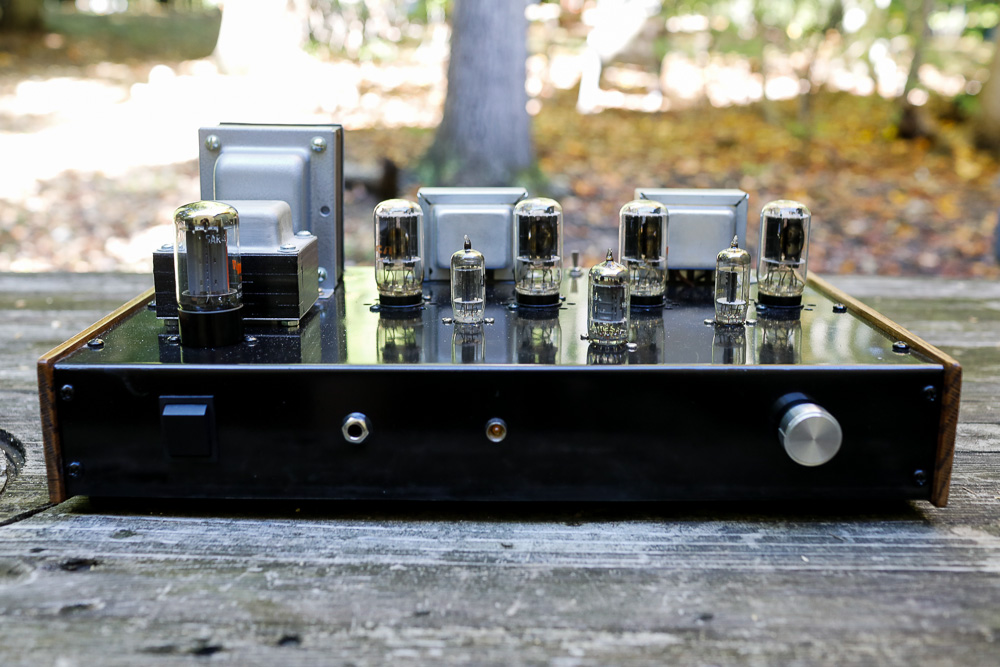
|
||||||||
|
Here with the the coin base 6BX7 tubes. |
||||||||
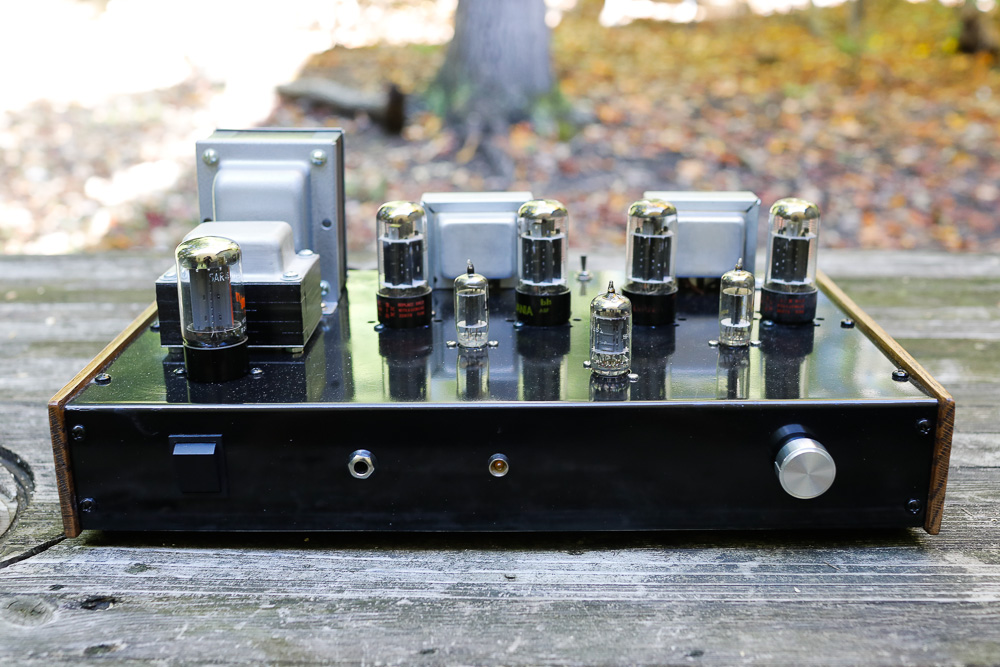
|
||||||||
|
Here with the the 6BL7 tubes. |
||||||||
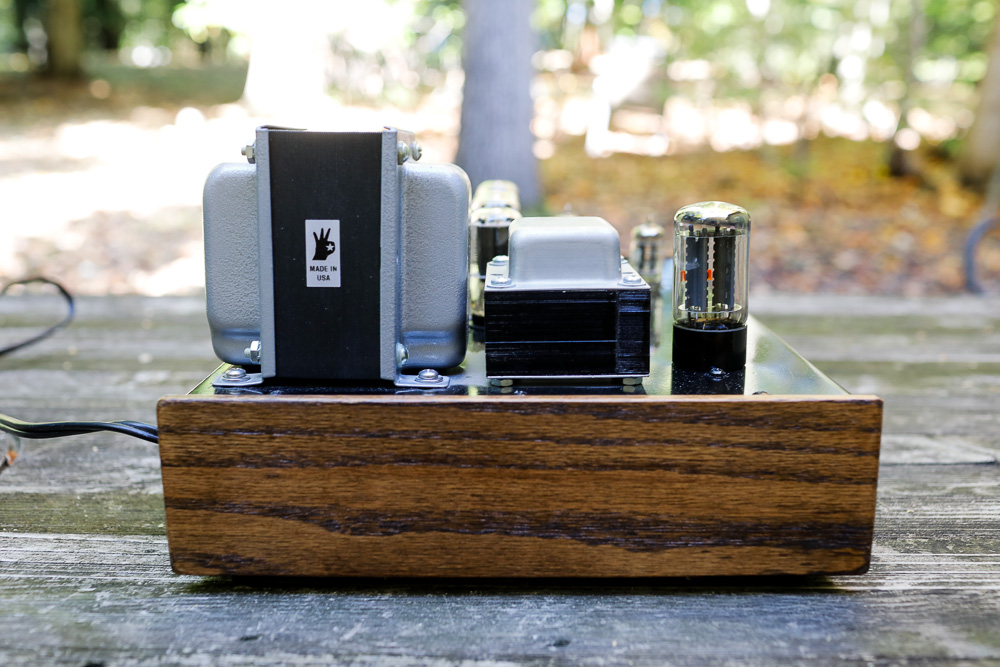
|
||||||||

|
||||||||
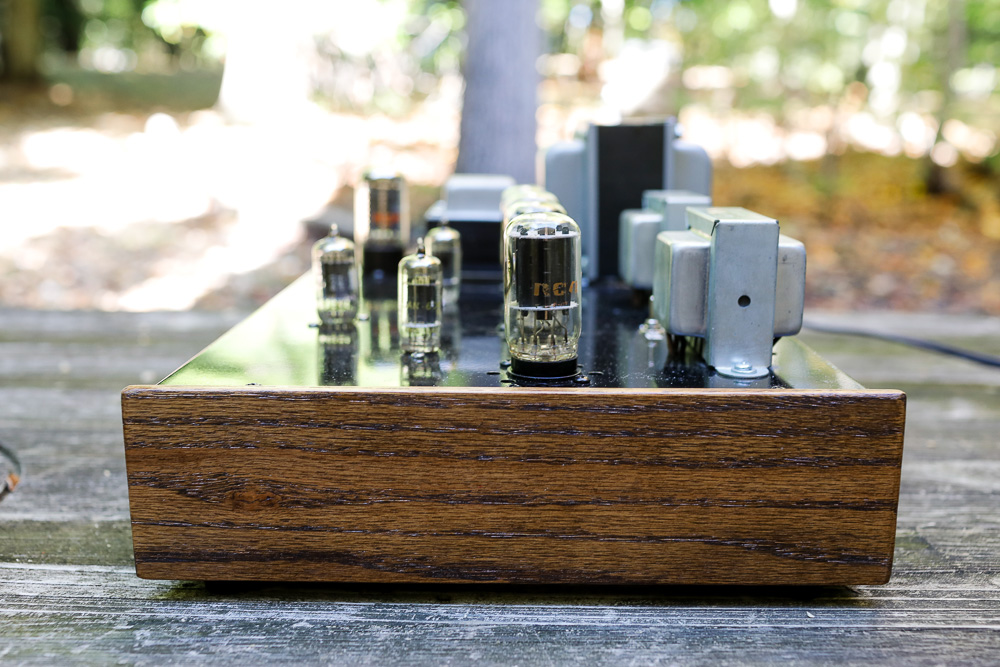
|
||||||||

|
||||||||
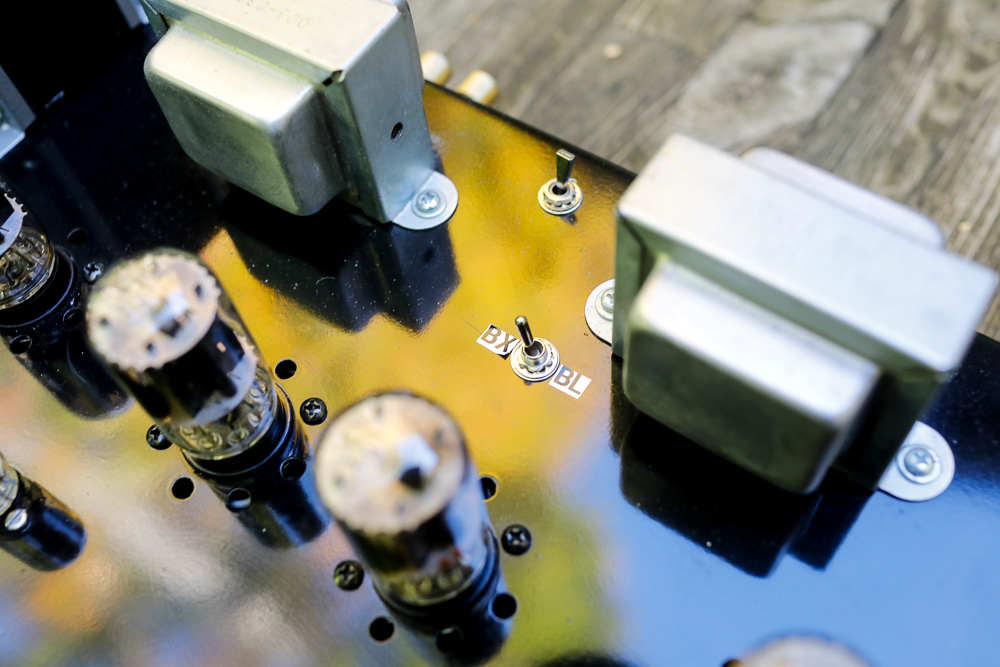
|
||||||||
|
The amplifier is switchable between the 6BX and 6BL tubes. The rear switch determines speaker or headphone output. Amazing flexibility here, really only found in a custom build by an adventurous creator. |
||||||||
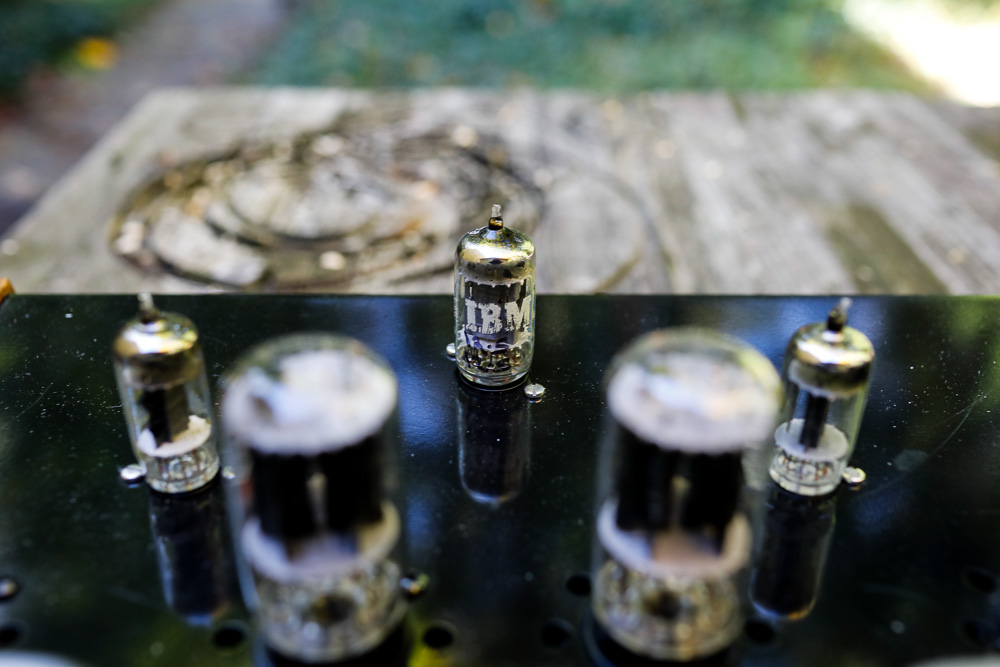
|
||||||||
|
The 5965 tube is a slightly lower voltage 12AT7, more in line with a 12V7 at 50 MU. Almost all of this tube type were made for the early computer industry, this one labeled for IBM back when IBM was a brand new company. These tubes would have gone into machines the size of your living room, and that were about as powerful as the DVD player you own today. But they are extremely rugged tubes, made for constant on/off signal duty, and long-term continuous use. When the computer ran hundreds of these in line, it would a real pain to find a bad tube, so these were made to extremely high specifications and were meant to last for years in constant service. The lightweight duty here in an audio amp is a cakewalk for any 5965. |
||||||||
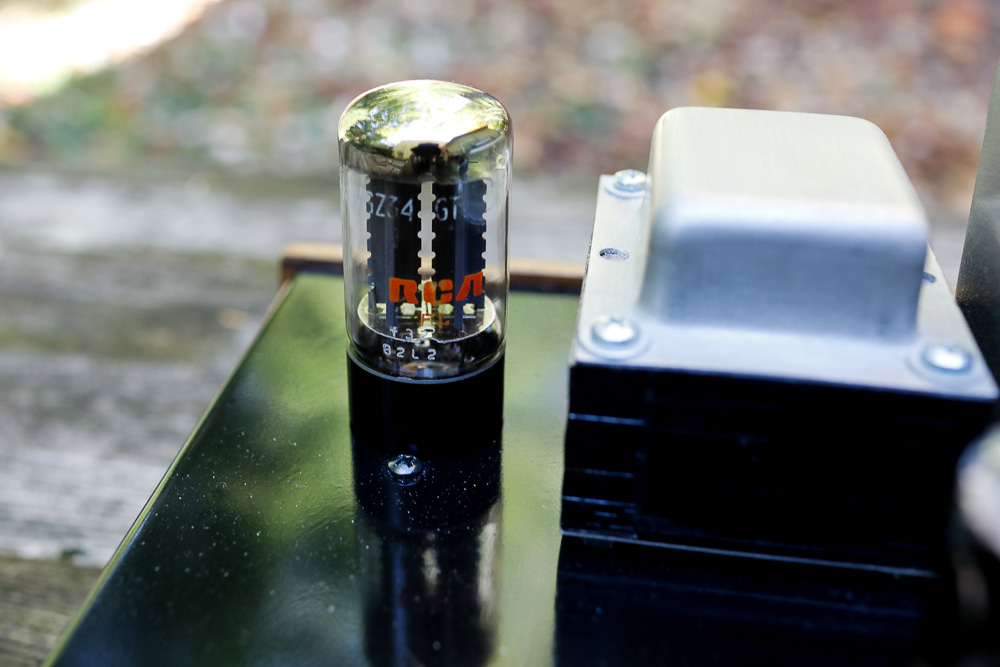
|
||||||||
|
This amp uses either 5AR4 or 5U4 rectifiers. Here with a Mullard saw tooth 5AR4, always a safe choice for good sound. |
||||||||
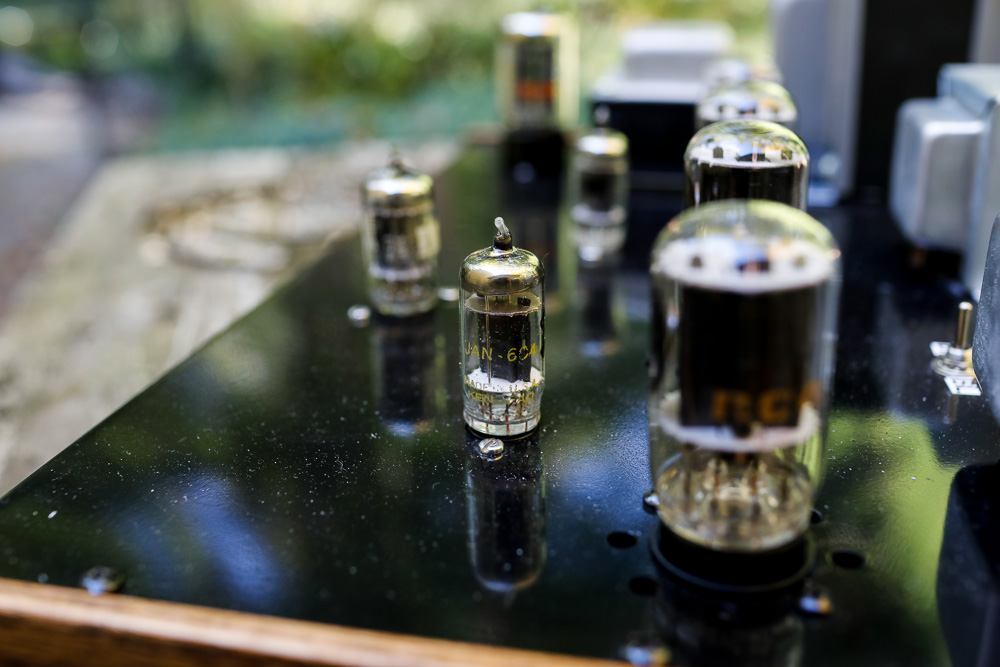
|
||||||||
|
The phase splitter duty on this amp falls to the 6C4, basically one half of a 12AU7. These are nice JAN versions. This is a tube I have no previous experience with, and is one of the smallest vacuum tubes I have ever seen. |
||||||||
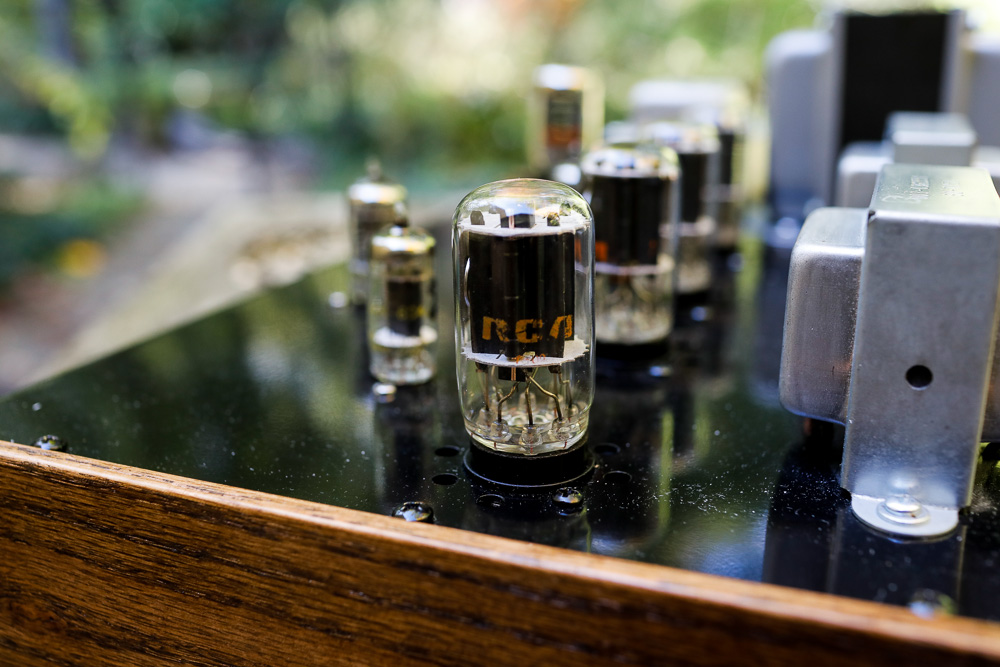
|
||||||||
|
The 6BX7 were used in early TV sets. I like TV tubes! They always seem to sound rich and vibrant, and punch way above their weight class. Like the 13EM7, these are a good example of price not being a good indicator of quality. These coin base tubes from RCA are spectacular sounding in this amplifier. |
||||||||
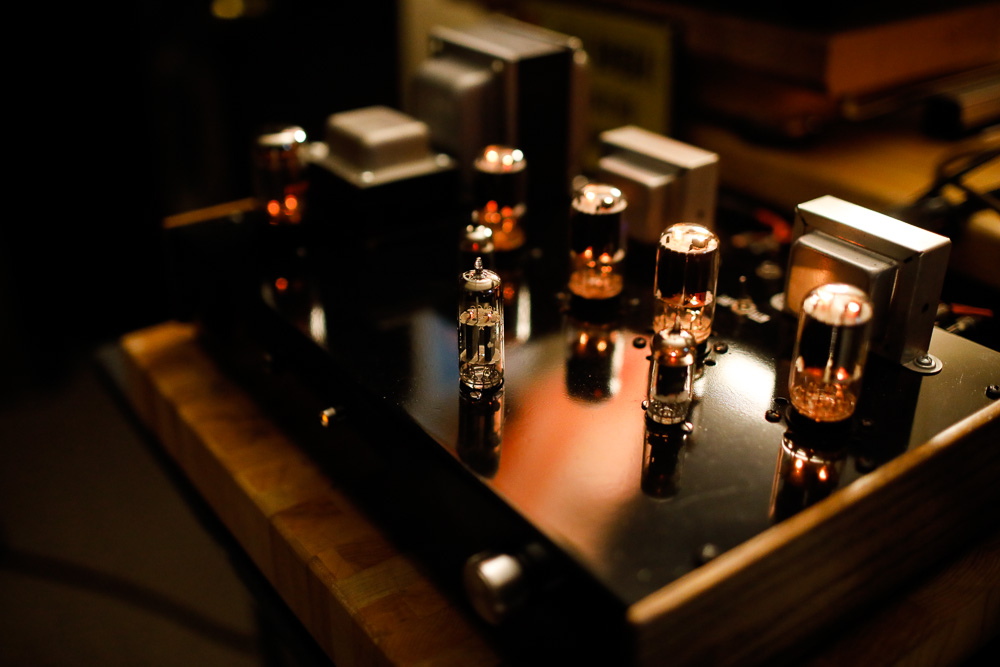
|
||||||||
|
A good night light. |
||||||||
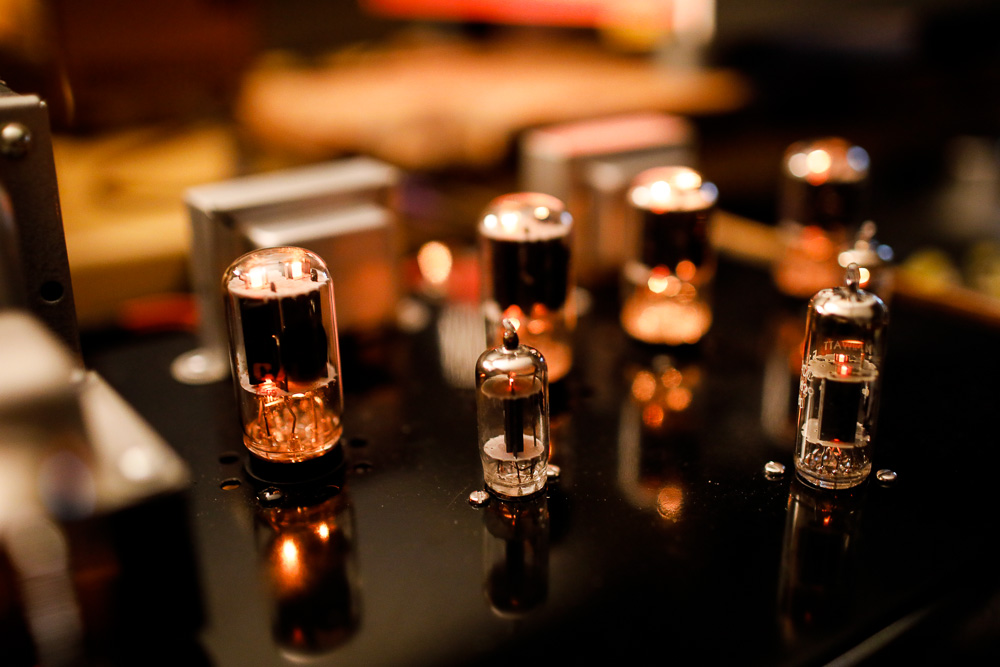
|
||||||||
|
This is hands-down one of the very best amplifiers I have ever heard. |
 |
|||||||
 |
 |
 |
 |
 |
|||
 |
|||||||
 |
|||||||